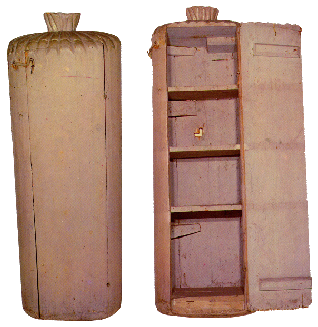The Sala delle Pale

The Sala delle Pale (picture by George Tatge, Regione Toscana)
The symbology of the Accademia is based on the idea that "good" language is like the flour that is separated from the bran. This image finds its immediate reference point in the activity of the lexicographers whose goal was to propose a model of language cleaned of the impurities of its usage, but it is also apparent in the adoption of objects and furnishings closely linked with the cultivation of wheat, its grinding and making into bread.


2 sacchi (i.e. sacks), which are lockers shaped as sacks, with a door and shelves inside to preserve the "flour", i.e. the statutes, regulations and other writings approved by the academic censors.
The hall takes its name from the 153 ancient shovels that are preserved here, personal emblems of the sixteenth and seventeeth-century members of the Accademia. In another hall you can see the pale belonging to some of the contemporary Academicians, which testify to the desire to keep this ancient tradition alive.
The complete and detailed catalogue of the pale was edited by Roberto Paolo Ciardi and Lucia Tongiorgi Tomasi (Le pale di Crusca. Cultura e simbologia, Accademia della Crusca, Firenze, 1983) and can be purchased at the Edizioni di Crusca. Another volume dedicated to the pale is the anastatic reproduction of the manuscript no.125 of the Library of the Accademia, Raccolta d'imprese degli Accademici della Crusca (edited by Domenico De Martino, with a foreword by Nicoletta Maraschio, Biblion Edizioni, Milano-Venezia 2010) also available for purchase online. It is possible to search the images and descriptions of the pale at this page or at this Facebook gallery.
Correlati
Traditional symbologyLe pale della Crusca. Cultura e simbologia
Raccolta d'imprese degli Accademici della Crusca MDCLXXXIV
Attività
Protocollo di intesa Accademia della Crusca / Ufficio Scolastico Regionale della Toscana / Società Dante Alighieri
L'Accademia della Crusca e la questione del genere nella lingua
Le iniziative dell'Accademia per il 2021, anno dantesco
Agenda eventi
Evento di Crusca
Collaborazione di Crusca
Evento esterno
Avvisi
Non ci sono avvisi da mostrare.


